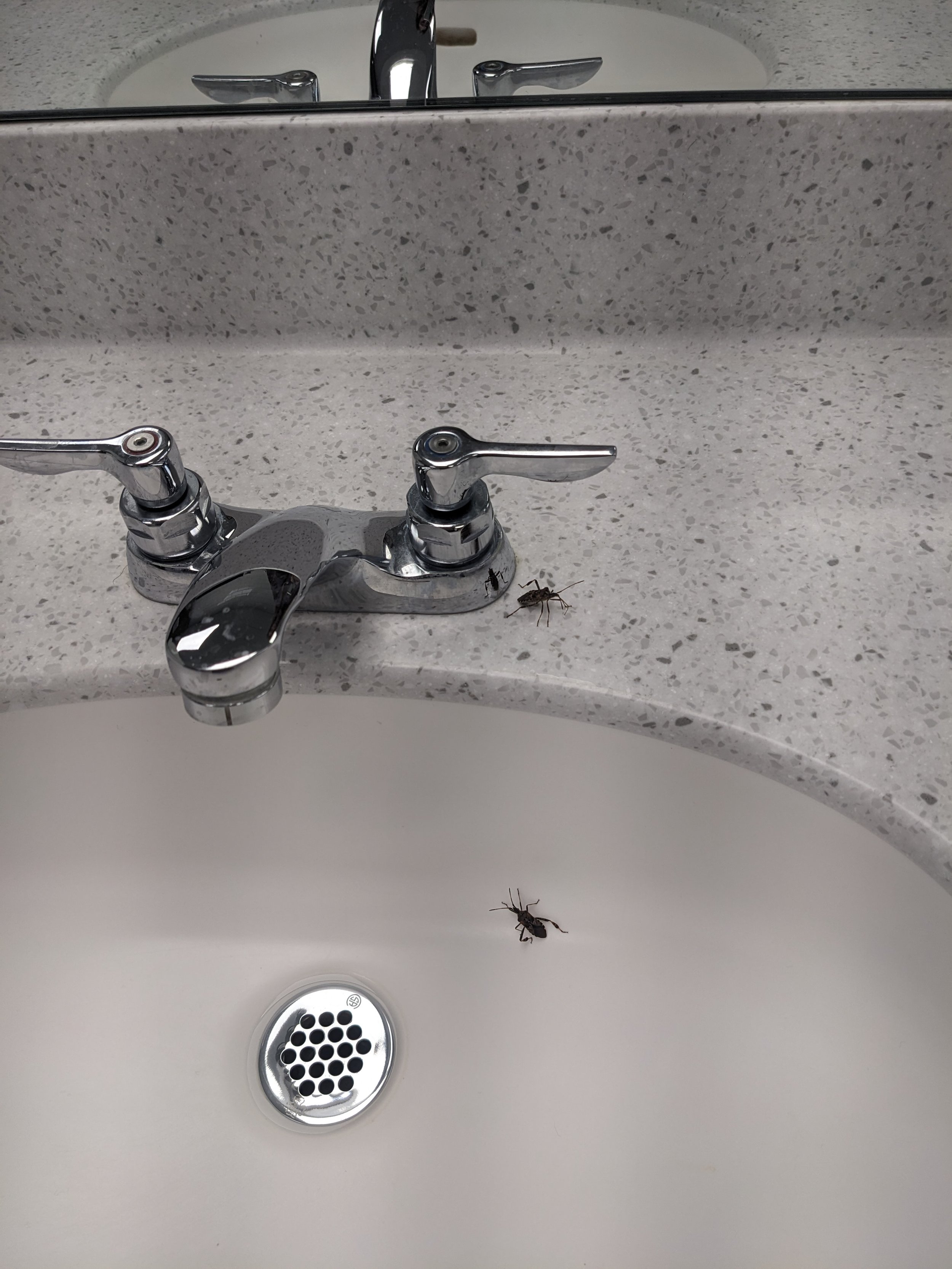
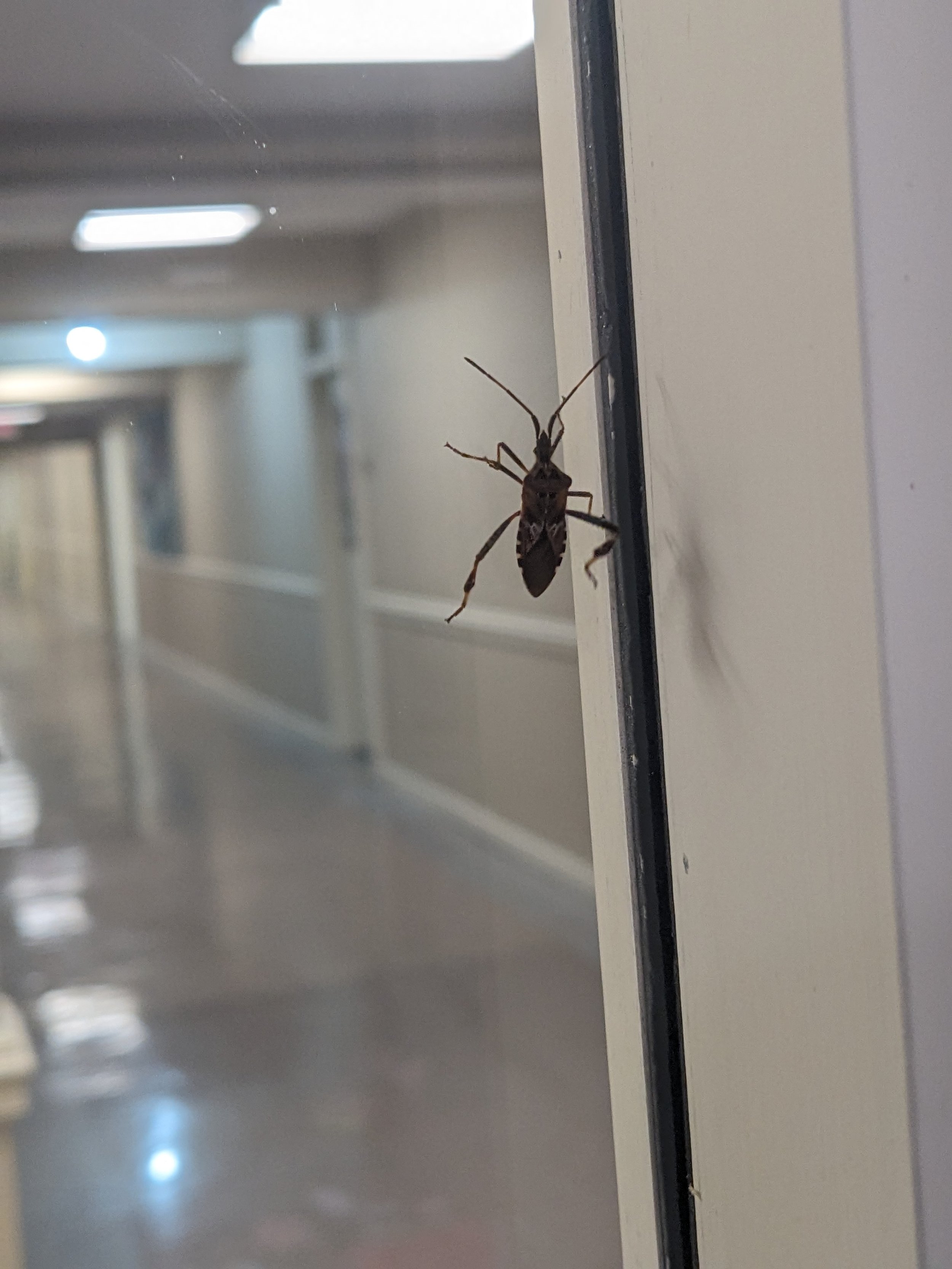
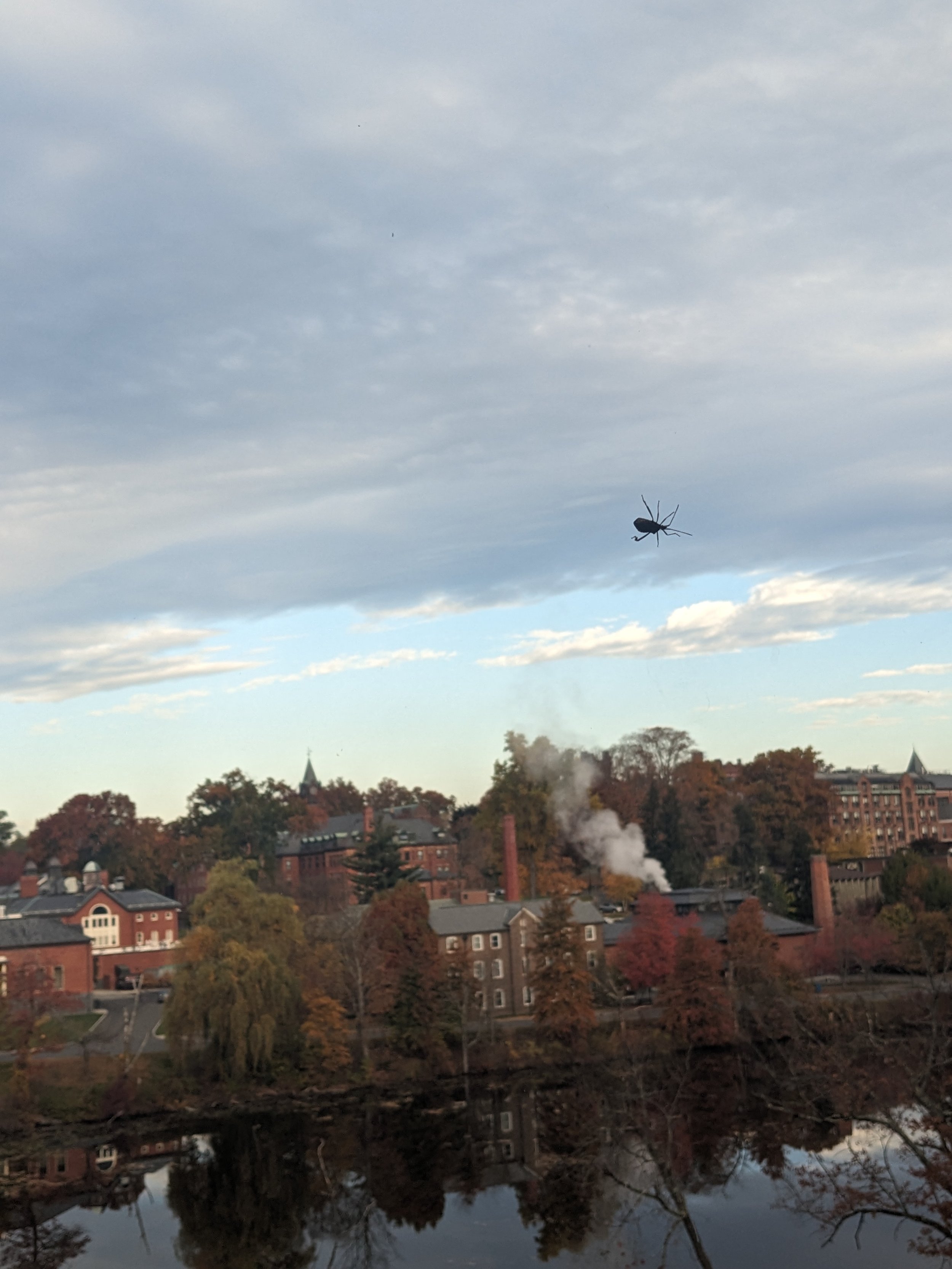

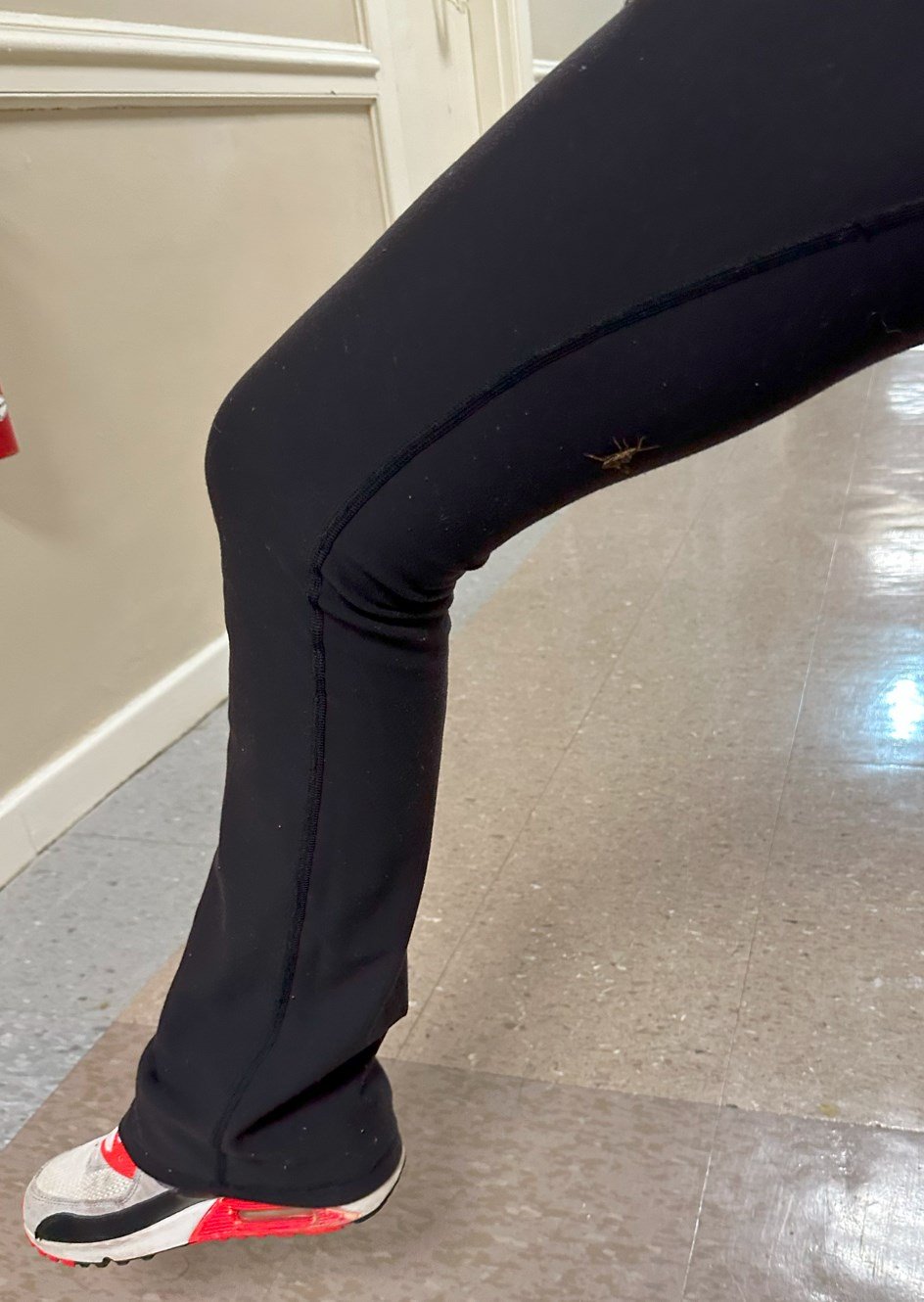
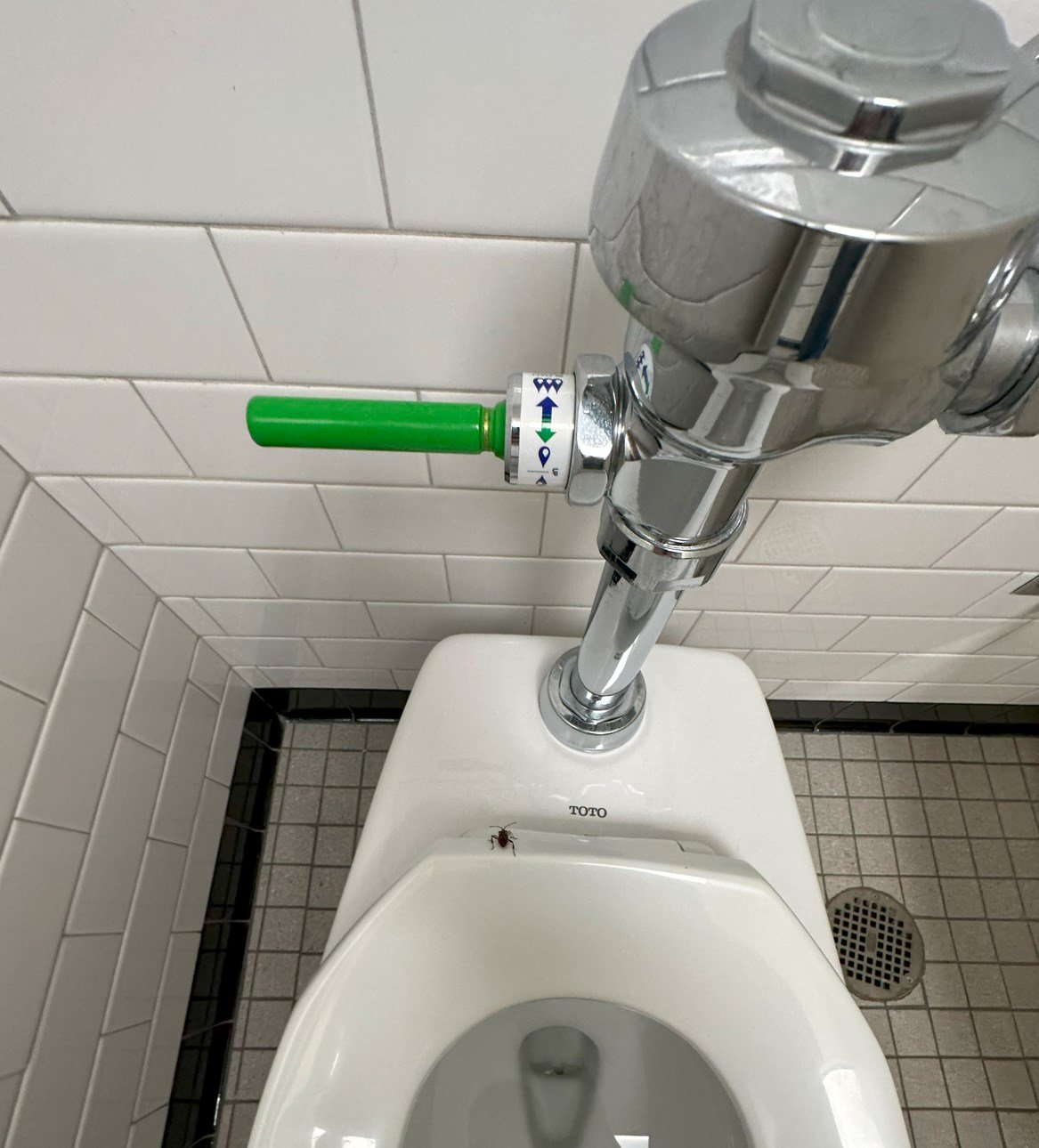
Photos 1, 2, 4, & 6 by Sarah Grinnell ‘26. Photos 3 & 5 by Kiera McLaughlin ‘26.
Sarah Grinnell ’26
Science & Environment Editor
The discovery of a new six-legged roommate has resulted in a new daily morning routine for many students on campus: wake up, turn off your alarm and bid good morning to the bugs crawling on your window.
Since the start of the fall semester, students have been noticing more and more of these unwelcome residents in their dorms and buildings across campus. These creepy crawlies are not afraid to make themselves known in the hallways nor cause jumpscares on shower curtains and sinks as innocent bathroom-goers try to get ready for the day.
The bugs, colloquially referred to as “stink bugs,” are actually western conifer seed bugs. First found in California, they have since expanded to the eastern part of the country and become an invasive species in Europe, according to Accurate Pest Control and Nuisance Wildlife. They are commonly mistaken under the umbrella term “stink bug,” despite being a separate species of bug and may also emit pungent odors when frightened, according to maine.gov.
However, the maine.gov website stressed that these insects are harmless and do not bite, sting or cause any kind of damage to buildings. Rather, they are simply looking for a warm place to bundle up for the winter. Unfortunately, their favorite hibernation hideout happens to be residential and commercial buildings, and the dorms on campus tick the boxes as their ideal hotels.
While they are harmless, the presence of the bugs has certainly been disruptive and alarming for students. According to Dickinson Hall resident Ciara Duff ’26, encounters with the bugs are so frequent that she cannot even open her window for fear of letting them in. Due to how the windows are insulated, Duff said the insects get trapped between the windows and the screens.
“Me and my roommate haven’t been able to open our windows all semester because then they’ll just come in and invade,” Duff said. “We’ve trapped so many of them and just brought them downstairs. There’s just dead ones all over the hallways and the bathrooms.”
Em Tetzlaff ’26 also described the bugs as a source of disruption in a written statement to Mount Holyoke News. “[This year] They’ve mostly been in large groups of 3 or more. … Prior [to this year] I was noticing one to three per common room, but they were also a nuisance in my dorm room. I would be trying to study and had a few occasions where they would fly into me. This was a daily occurrence,” Tetzlaff said.
Because western conifer seed bugs favor warm quarters protected from the winter cold, the early summer stuffiness of the dorms on campus makes them ideal real estate for the critters. While spending their time in coniferous trees in the spring and summer, the bugs begin to enter buildings in late summer and early fall to prepare for the winter months ahead, maine.gov explained.
Duff said the bug situation “was a big problem in the beginning of the year when it was really hot out, and we couldn’t open our windows — that was really terrible, and it would get so sticky and hot and gross in our room.”
While a stink bug or two was seen here and there last year, according to students, the bugs have had a noticeable presence this semester. “I can’t really speak on whether it’s way worse than usual this year. I don’t know if it’s just a weird climate change symptom sort of thing, or it’s just unusually hot so there’s more bugs,” Duff said.
According to Tetzlaff, this was an issue last year as well.
“I’ve seen the stink bugs in the dorms over the past two years, [but] it hasn’t been as bad in my experience living in [Mandelles Hall] this year as living in Prospect last year,” Tetzlaff said. “This year I just started noticing them about a week ago in common spaces within the dorms, and lingering outside the dorms. They’ve mostly been in large groups of three or more.”
Other students are sympathetic to the newest Mount Holyoke College bunkers and their nomadic needs. Cameran Steiger ’26, a resident of South Rockefeller Hall and self-proclaimed “vehement bug-supporter,” says she “[supports] the stink bugs’ right to take over our hallowed halls.”
“Western Conifer Seed Bugs … are native to North America west of the Rockies, but have expanded their range eastward in recent years. If we’re not complaining about finding Californians in our halls, I don’t think that we should be worried about the stink bugs either,” Steiger said.
The Mount Holyoke News reached out to Facilities Management for comment but did not hear back by the time of publication — so, for now, students will have to coexist with the curious creatures. The best that particularly concerned residents can do is to identify and seal off all crevices that bugs might be able to get in through, as is recommended by Mass Audubon. RAM Pest Control also warns against killing the bugs when you find them, as the odor they emit can attract even more bugs.
